On a bloom-filled weekend in May, the small but mighty Broccoli book sale team (me, Anja, and Anja’s best friend, Rachel) worked the Seattle Art Book Fair at Washington Hall, a charming two-story historic building in the city’s Central District. We spent two days smiling at strangers from behind a six-foot long folding table piled high with tidy stacks of Broccoli books, magazines, and oracle decks, showing off spot-gloss paw prints and explaining the adventures of Velveeta and El Dente. We met fellow publishers, artists, aspiring writers, thousands of print-loving folks of all ages, and one incredibly adorable dachshund puppy.
If you love print, art book fairs are a glorious experience. They happen all over the world, usually during a weekend, and different fairs have different themes. Some center small DIY zines, community activism, and mutual aid, while others focus on comics, vintage art books and ephemera, or ambitious small-press works. They offer workshops, provide opportunities to meet and connect with other print fans, and feature site-specific art installations. Vendors have to apply to sell, usually months in advance, and the selection process varies from fair to fair. But whether you go to sell, to buy, or merely to admire, they are amazing ways to connect with all the people out there working to keep print alive.
In 2024, Anja applied to the SABF as an experiment, and we were accepted. We weren’t quite sure what to expect—we had never traveled to sell at an art book fair before, and it was going to be expensive (rentals and plane tickets add up fast, and it is never cheap to travel from Cleveland, where I am). But we had a great weekend—our sales more than covered our costs, we met lots of people, and we even got to see the Northern Lights.
While we did not expect a repeat of epic celestial phenomena, we were still very excited to be back. On Friday, the team convened. I flew in from Ohio, Rachel took the ferry from Victoria, and Anja drove up from Portland with a car full of inventory. The next morning, it was time to set up. After Anja executed some truly harrowing and awe-inspiring driving maneuvers to free her car from the frighteningly narrow AirBnB garage, we made it to Washington Hall. One lesson learned from last year’s book fair adventures was that wheels are our friends. Last year, I borrowed a rickety dolly to move all of our heavy boxes, but this year, Anja had a nifty folding wagon. (We had spotted some in action and took note; this year’s wheeled conveyance of choice was the Hulken bag.) We got the wagon set up, crammed it perilously full, and made our wobbly way into the hall to pick up an exhibitor packet and find our table. Then, Rachel and Anja took the car back (parking onsite is limited) while I rooted through boxes like a manic terrier and started getting the table ready. Our table set-up is pretty simple, with a bodacious Natalie Lété tablecloth covered with writhing snakes, shells, and flowers to help us stand out.
At ten, the doors opened, and almost immediately, the hall was packed. Folks were stacked two-deep. Having Rachel there to help really saved the day— while Anja and I talked to the people up front, she happily passed copies of books over their heads to the folks waiting behind, drawing them in with a great Snail World 2 one-liner: “In this book, a snail is trying to solve a supernatural mystery.”
During fair hours, we were mostly glued to our table, processing sales and answering questions. Occasionally, fair volunteers came around with clementines and bottles of cold water or checked in to see if we needed anything. Jayme Yen and Tom Eykemans, who organize the SABF with a team of volunteers and advisors, do an amazing job—the kind helpfulness they radiate sets the tone for the whole weekend. Besides keeping the fair running smoothly, they promoted the heck out of it—everywhere we walked around in the city (and we walked a lot to counteract all that sitting), we saw SABF posters. This year, attendance was up 43%, which seemed pretty close to the hall’s capacity.
After the end of day one, we took an epic ramble to admire bookstore cats, curbside plantings, and the many, many rabbits hopping all over the city.
On Sunday, we got up early to secure bagels and kippered lox (delicious) from Old Salt and make friends with the crows at Troll’s Knoll. Then, we had an hour to explore the fair before it opened to the public. Checking out other tables is one of our favorite things to do—Anja and I always come away with hauls of books, zines, and prints, causing me to test the limits, once again, of how much my carry-on will hold. It was great to see some familiar faces, like Amelia from Anemone and John from Monograph Bookwerks, and I was extra happy to meet Rachel Hayes of Taxonomy Press, the publisher and editor of The Floral Observer, a deeply charming print newsletter about the natural world that is one of my favorite subscriptions.
After our supermarket sweep of the fair, we got down to business. Sunday was even busier than Saturday; Catnip sold out, and only few copies were left of most everything else. Since we are still pretty new to book fairs, we don’t have lots of sales data to draw on for planning what to bring, but we keep track and make educated guesses. Getting as close as possible to selling out is always the goal—anything to minimize the dreaded take-home schlep. In the end, we sold more than we did in 2024, and we celebrated with a diner dinner. (Diners, gardens, bookstores, and big walks are recurring themes on all Broccoli excursions.)
Back at our rental, we talked through everything we learned. Besides the sales, these fairs give us so much to think about. We’re like field scientists, observing the behaviors of that rare and precious species, the customer. Here are some things we noticed:
Text on the backs of books matters. The first thing people do when they pick up a book or magazine is flip it over—us included. We don’t put text on the back of our books, but we may need to rethink that choice, especially after seeing so many people flip them over and find a blank.
Humans are creatures of touch. They love to flip and page and rifle. And they need to know what’s in the box, so having open boxes of oracle decks makes a huge difference.
Bright covers drive more sales.
We also came away with some ideas for improving our set-up at future fairs:
Have a printed, easy-to-read document listing all the ways we accept payment. Tap, swipe, Venmo, etc.
Print out our price list. (We usually handwrite this at each fair; time to upgrade, haha.)
Pack extra business cards. These always go faster than we think they will.
Bring cash for making change. We were surprised by how many cash sales we had this year.
Experiment with QR codes. Maybe we can use them to get people to sign up for our mailing list or pre-order upcoming titles, like Heartbeat and Sun+Moon?
Consider making small, fair-specific items. Stickers, bookmarks, totes, etc.—people love the small stuff.
We’ve got a few more fairs coming up this year (next up, the SF Art Book Fair in July!), so we’ve got time to prepare. Now, I just have to find a Mary Poppins carry-on that will let me stash all of the heavy art books I want to bring home with me...

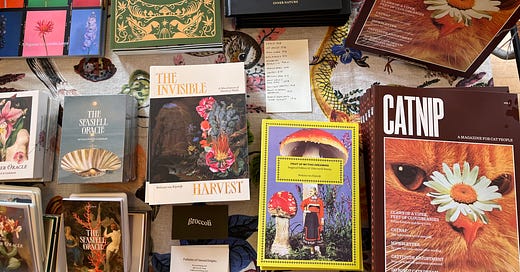



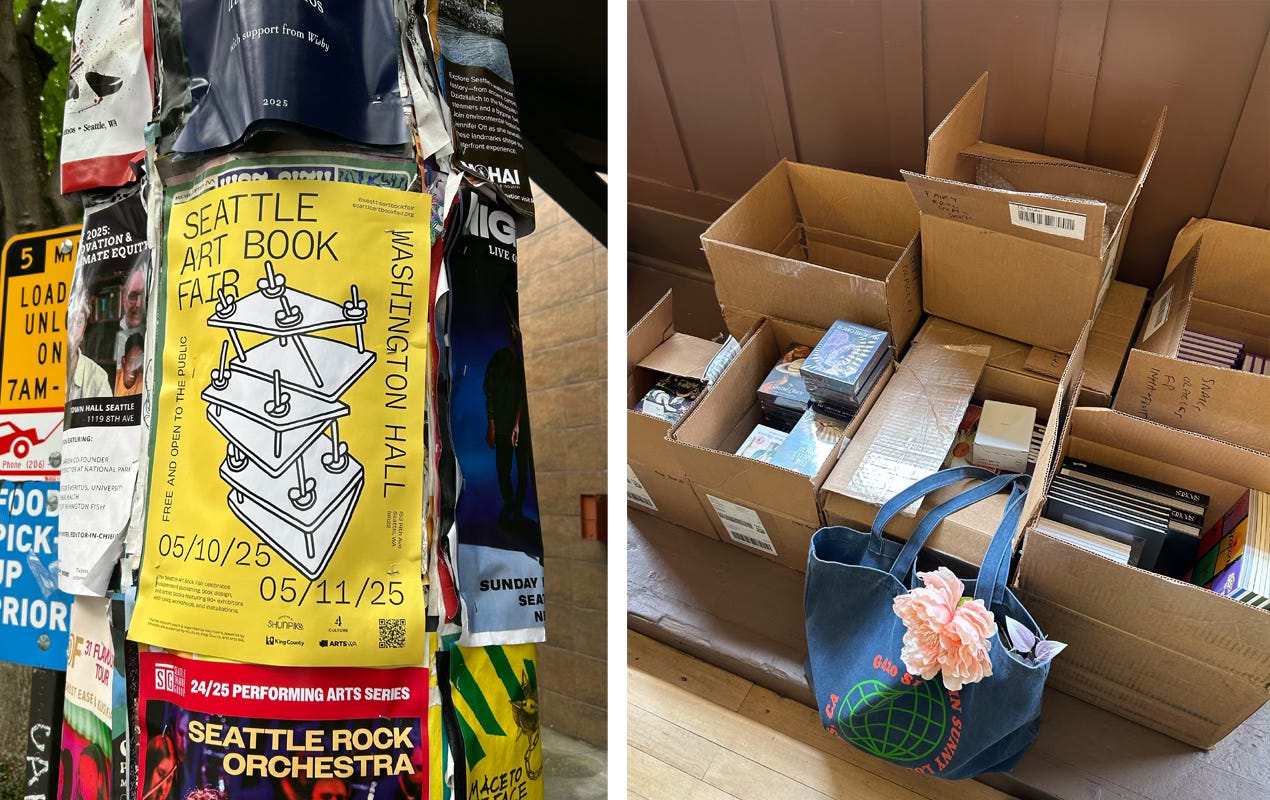
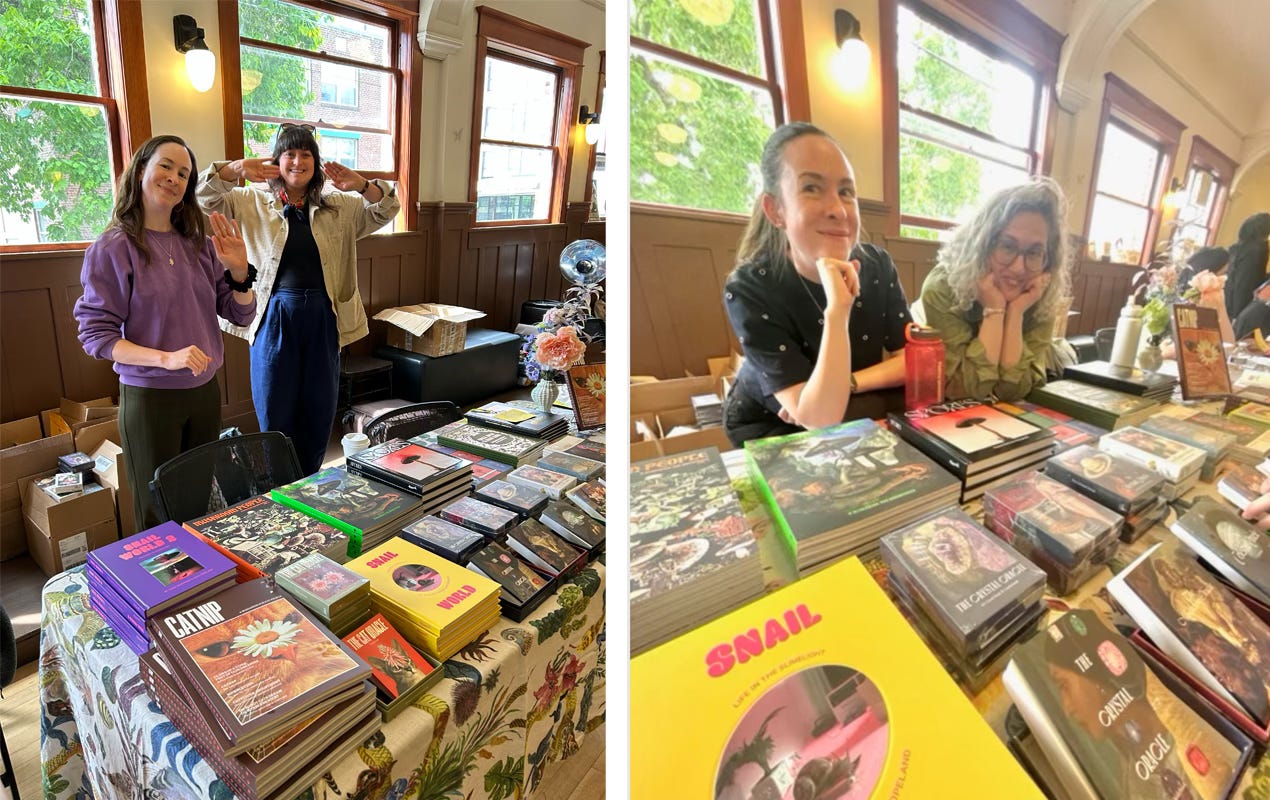
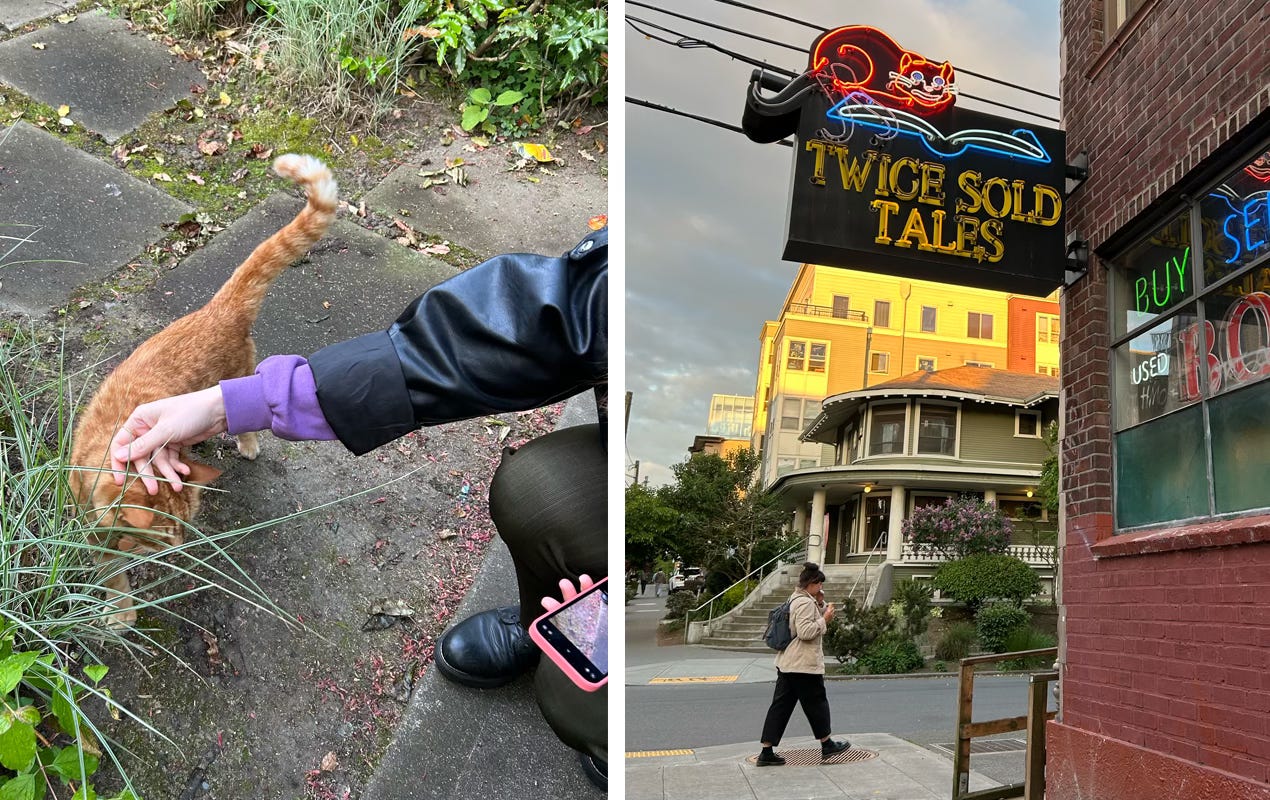
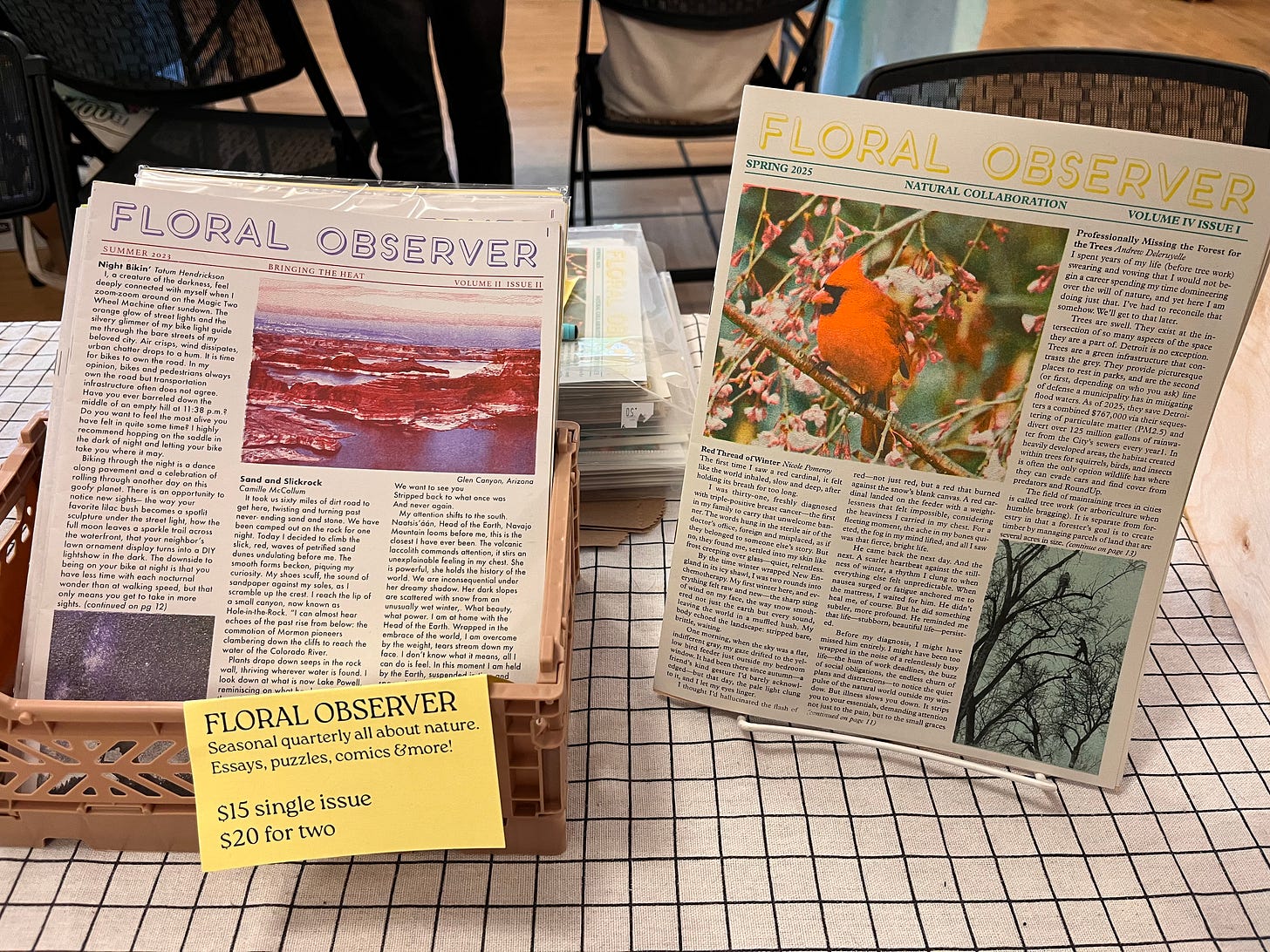
Thank you for sharing your thoughts and experiences about the fair. And great photos!
Oooh I'll try to come visit you at SF Art Book Fair! Love these reflections. Never considered putting text on the back of The Rebis, but perhaps next year we will.....